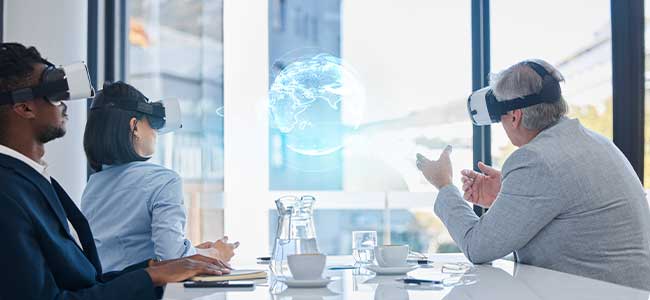
Page 3 of 4
Enhancing Employee Engagement with VR, AI and 3D Tools
Incorporating VR Training
VR continues to grow in popularity, as more Gen-Z employees enter the workforce. Learners of all ages crave engagement and interactivity, and this is especially important for younger generations who are notably more technologically savvy and more likely not to be engaged at work compared to other generations.
One of the best reasons to incorporate VR into training programs is the effectiveness of experiential learning. “Learning by doing” methods can improve engagement by 50 percent compared to passive learning methods, such as lectures or reading materials. When utilizing experiential learning methods, the viewer is put in an environment where they can see and feel the effects of their actions first-hand. This is particularly important for safety scenarios that are too dangerous to train in real life, such as working with high-voltage electrical equipment.
A blended learning ecosystem is essential in any organization and learning by doing is a key aspect in providing well-rounded training programs that fully prepare employees.
Where 3D Technology Fits In
The effectiveness of emergency scenario training can also increase with the use of 3D modeling. 3D modeling can convey the impact of a disaster without having to experience it. Utilizing 3D models in certain online training programs can allow the learner to experience different scenarios depending on how the learner chooses to respond in an emergency. For example, graphics can show the spread of a fire and the resulting damage in training scenarios, helping the trainee feel immersed in the course. The real-time understanding that comes from these experiences helps the learner quickly prepare for being on the job.
Leveraging AI
A third technological advancement that is making waves in training programs is AI. In this past year, AI has grown in popularity and become a major talking point for every industry. Workplace training is no exception. AI can allow training materials to continually adapt and personalize learning experiences to the specific learner. Not only can AI generate content quickly but it can also help refresh materials at a more rapid frequency and keep them engaging.
This article originally appeared in the July/August 2024 issue of Occupational Health & Safety.